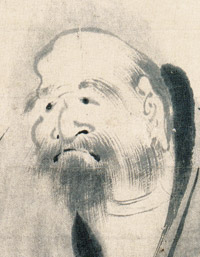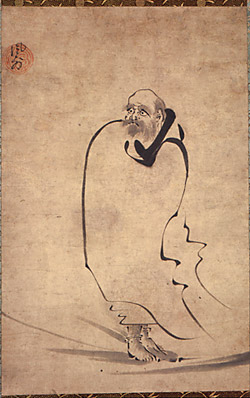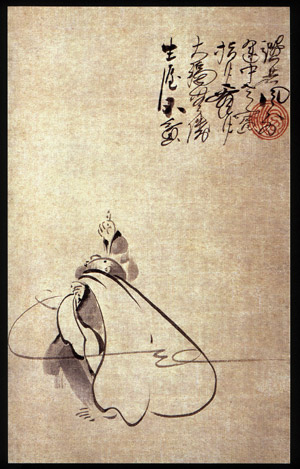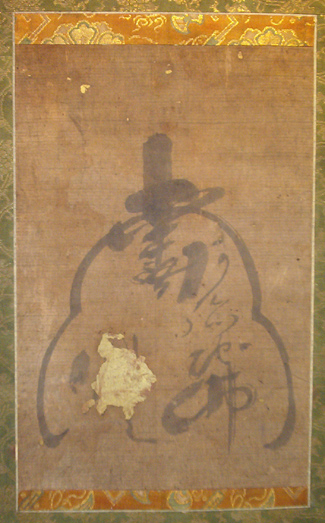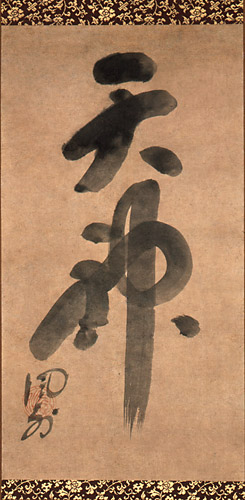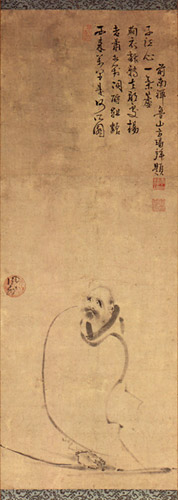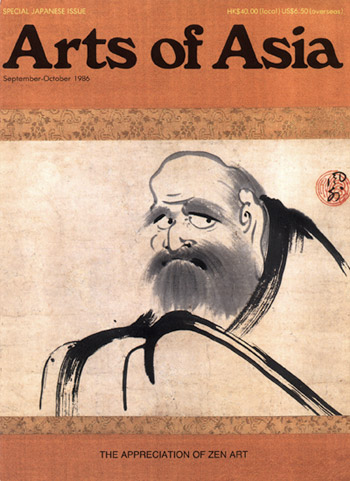FUGAI EKUN (1568–1664)

Fugai's paintings evoke a most mysterious and deeply intense feeling. Even his name suggests those qualities: Fugai means "Beyond the Wind."
Fugai Ekun was ordained before the age of ten into the Soto sect of Zen. Though he was briefly abbot of Seigan-ji in Kanagawa, he spent the greatest part of his life as a cave-dwelling hermit monk.
In particular, Fugai was a master at painting Daruma. He may have been so drawn to the subject and painted it so compellingly because he lived in much the same way as Daruma—in seclusion and meditation. Probably for this reason, his Daruma paintings have a particularly deep and haunting quality.
At about the age of 60, Fugai came to the attention of Inaba Masanori, the local lord of Odawara castle, who invited him to live in the castle and become his teacher. We suspect, though we cannot know for sure, that Inaba Masanori made Fugai "an offer he couldn't refuse." We do know that after a brief time, Fugai left abruptly and fled into the mountains where he found solace and serenity.
True to his name, Fugai spent the last part of his life in seclusion. He died at the age of 86.
PLEASE NOTE: ALL OF THE PAINTINGS BELOW HAVE BEEN SOLD
AND ARE FOR DISPLAY PURPOSES ONLY
